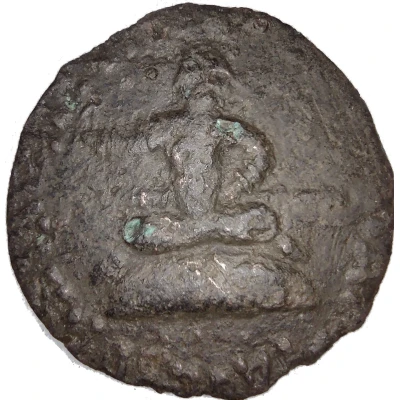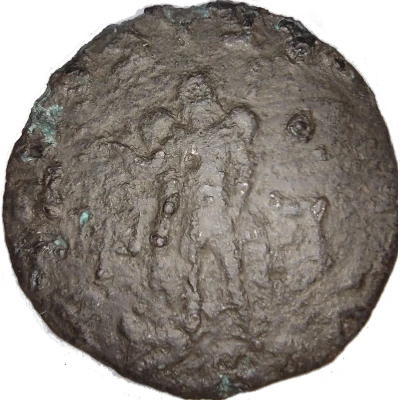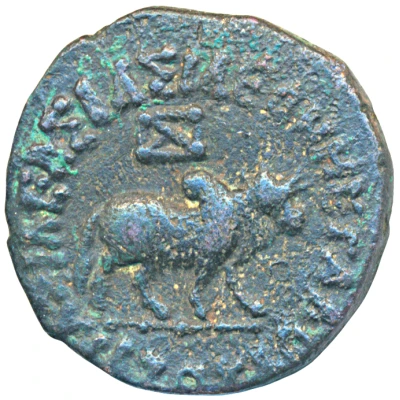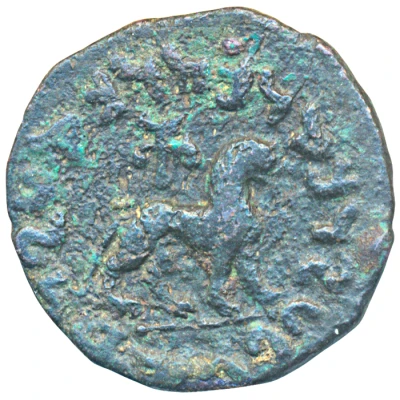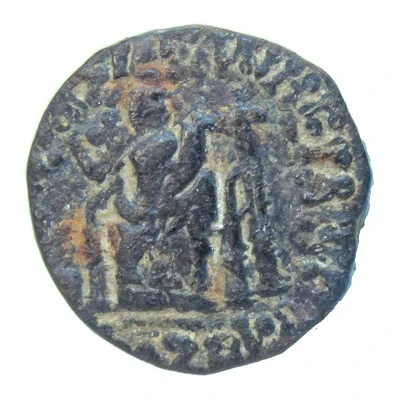
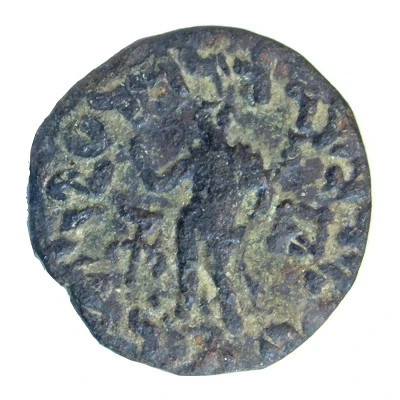

© Sujit
Pentachalkon - Azes II 35 BC - 5 AD
| Copper | 10.41 g | 25 mm |
| Issuer | Indo-Scythian Kingdom |
|---|---|
| Type | Standard circulation coin |
| Years | 35 BC - 5 AD |
| Value | Pentachalkon (5⁄48) |
| Currency | Drachm (200 BC to 400 AC) |
| Composition | Copper |
| Weight | 10.41 g |
| Diameter | 25 mm |
| Shape | Round (irregular) |
| Technique | Hammered |
| Demonetized | Yes |
| Updated | 2024-10-10 |
| Numista | N#101735 |
|---|---|
| Rarity index | 90% |
Reverse
Hermes standing facing, turned slightly to left, caduceus in left hand, right arm outstretched, control marks at left and right, Kharoshthi legend around
Translation: Maharajasa rajarajasa mahatasa / Ayasa
Edge
Plain
Comment
MIG 831, Sen 101.1Interesting fact
One interesting fact about the Pentachalkon - Azes II coin is that it features a unique blend of Greek and Indian cultural influences in its design. The coin's obverse side features a portrait of Azes II, depicted with a distinctly Greek-style beard and hair, while the reverse side shows a representation of the Hindu deity Kartikeya, also known as Skanda, who was revered as the god of war and victory in ancient India. This fusion of cultural motifs reflects the Indo-Scythian Kingdom's diverse cultural heritage and the blending of traditions that occurred during its history.
